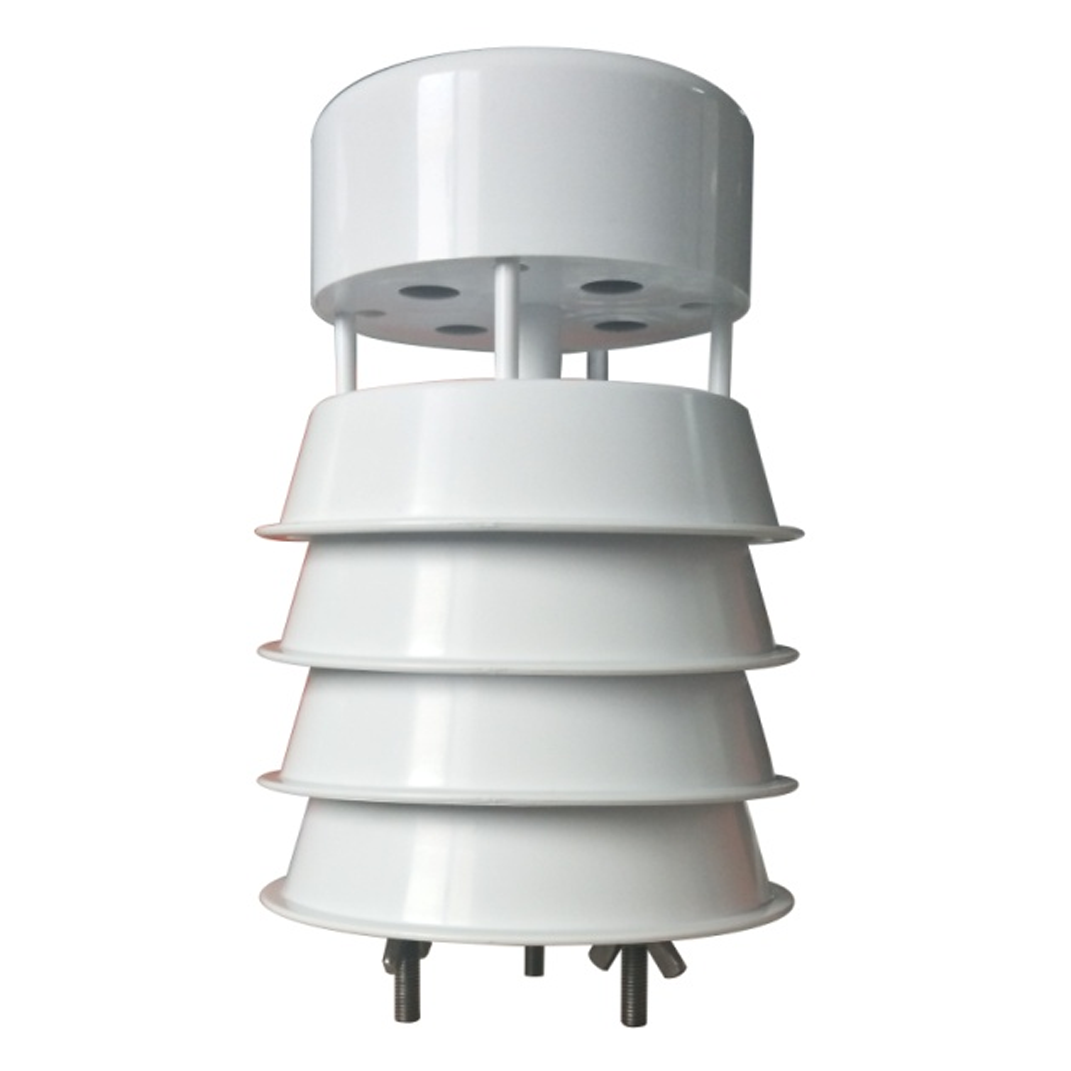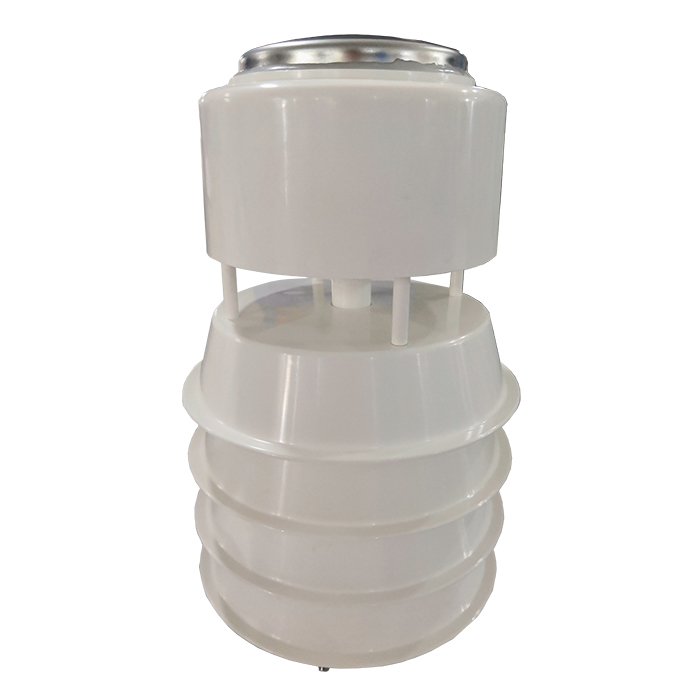

— Products —
 Consumer hotline +8618073152920
Consumer hotline +8618073152920 WhatsApp:+8615367865107
Address:Room 102, District D, Houhu Industrial Park, Yuelu District, Changsha City, Hunan Province, China
All products
Ultrasonic wind speed and wind direction sensor is a mini fully digital sensor, highly integrated ultrasonic wind speed and wind direction sensor, small size, high integration, light weight, strong and durable; This product does not have any moving parts, and does not require on-site maintenance and calibration. It can accurately and quickly detect the wind speed and wind direction values in the on-site environment. The high-strength structure design can accurately detect in ···
Tel/WhatsApp:+8615367865107
Email:Arvin@niubol.com +Nearly 100 partner company in more than 68 countries. We are committed to providing high-quality, practical products to meet your needs and help you solve problems.Product Details
Product introduction of Ultrasonic wind speed and direction sensor:
Ultrasonic wind speed and wind direction sensor is a mini fully digital sensor, highly integrated ultrasonic wind speed and wind direction sensor, small size, high integration, light weight, strong and durable;
This product does not have any moving parts, and does not require on-site maintenance and calibration. It can accurately and quickly detect the wind speed and wind direction values in the on-site environment. The high-strength structure design can accurately detect in harsh climate environments, and can be widely used in agriculture, meteorology, environment , environmental protection, transportation, smart city, industrial testing and other fields.
Ultrasonic wind speed and direction sensor technical parameters:
| Wind speed measurement range | 0~40m/s |
| Wind direction measurement range | 0~360° |
| Wind speed measurement accuracy | Low wind speed: ±0.5m/s Low wind speed: ±3° High wind speed: ±1m/s High wind speed: ±5° |
| Wind speed measurement resolution | 0.01m/s |
| Wind direction measurement resolution | 1° |
| Power supply | DC12V |
| output | RS485 |
| Baud rate | 9600 |
| Shell material | engineering plastic |
| Operating temperature | -40°C-70°C |
| Storage temperature | -50°C – 80°C |
| Working humidity | 0-100%RH |
| Appearance size/weight | φ90 X 140mm/0.6Kg |
| Protection class | IP65 |
| Overall power consumption | 0.2W |
 |  |  |  |
| Ultrasonic wind speed and direction sensor | 5 in 1 Ultrasonic wind speed and direction sensor | 6 in 1 Ultrasonic wind speed and direction sensor | 7 in 1 Ultrasonic wind speed and direction sensor |
Ultrasonic Wind Speed and Direction Sensor Product Introduction and Value
The ultrasonic wind speed and direction sensor is an advanced sensor device used to measure wind speed and direction. It utilizes ultrasonic wave technology to continuously monitor the movement of air and provide accurate measurements of wind speed and direction. Here is a product introduction and the value it offers:
Ultrasonic Wind Speed and Direction Sensor Product Introduction:
The ultrasonic wind speed and direction sensor employ a non-contact measurement principle. It emits and receives ultrasonic waves to detect the speed and direction of the wind. The sensor typically consists of a transmitter and a receiver. The transmitter emits ultrasonic waves, while the receiver detects the reflected waves and calculates the wind speed and direction. This sensor is characterized by high precision, fast response, and stable reliability.
Ultrasonic wind speed and direction sensors are devices used to measure the speed and direction of wind using ultrasonic technology. Instead of traditional mechanical cups or vanes, these sensors utilize ultrasonic sound waves to detect and analyze air movement.
Here's how an ultrasonic wind speed and direction sensor typically works:
1. Ultrasonic Transducers: The sensor consists of multiple pairs of ultrasonic transducers, usually arranged in a cross configuration. Each pair of transducers is positioned opposite to each other, creating a measurement path.
2. Sound Wave Propagation: One transducer in each pair emits ultrasonic sound waves, while the opposite transducer receives the waves. These sound waves travel across the measurement path.
3. Time of Flight Measurement: The emitted sound waves propagate through the air and are affected by the movement of air particles. The receiving transducer measures the time it takes for the sound waves to travel between the transducers.
4. Wind Speed Calculation: By comparing the time it takes for sound waves to travel in both upwind and downwind directions, the sensor can calculate the speed of the wind. The speed is derived from the difference in time of flight between the two paths.
5. Wind Direction Calculation: The sensor also determines wind direction by analyzing the phase shift of the received sound waves. The phase shift is caused by the movement of air particles and can be used to determine the wind direction relative to the sensor.
Ultrasonic wind speed and direction sensors offer several advantages, including:
- Maintenance-free: They have no moving parts, reducing the need for maintenance and minimizing wear and tear.
- High accuracy: Ultrasonic measurements can provide accurate and reliable wind speed and direction data.
- Non-intrusive: These sensors can be installed without obstructing the airflow, making them suitable for various applications.
- Wide operating range: They can measure a broad range of wind speeds, from gentle breezes to strong winds.
These sensors are commonly used in meteorology, environmental monitoring, agriculture, aviation, and other fields where accurate wind information is essential. They provide valuable data for weather forecasting, climate research, wind energy assessment, and various safety applications.
Ultrasonic Wind Speed and Direction Sensor Value:
1. Weather Monitoring: The ultrasonic wind speed and direction sensor is used in weather monitoring and meteorological research. It provides accurate measurements of wind speed and direction, enabling meteorologists, weather stations, and other related organizations to understand current and forecast future weather conditions. This is crucial for predicting storms, issuing weather alerts, and conducting climate studies.
2. Aviation and Maritime: The ultrasonic wind speed and direction sensor finds wide applications in aviation and maritime industries. Accurate knowledge of wind information is essential for adjusting navigation and course settings for aircraft, ships, and drones. The sensor provides real-time data on wind speed and direction, helping optimize route selection, assess risks, and improve fuel efficiency.
3. Building and Energy Management: In the field of building and energy management, the ultrasonic wind speed and direction sensor can be used to monitor and control indoor and outdoor airflow. By measuring wind speed and direction in real-time, adjustments can be made to ventilation systems, window and door positions, and building designs to achieve better energy utilization and comfort.
4. Environmental Monitoring: The ultrasonic wind speed and direction sensor also has applications in environmental monitoring. For example, it can be installed in industrial areas or cities to monitor air flow and the dispersion of pollutants. This helps assess environmental impacts, improve air quality, and protect ecosystems.
In summary, the ultrasonic wind speed and direction sensor is an advanced device for measuring wind conditions, offering high precision and reliability. It plays a crucial role in weather monitoring, aviation and maritime industries, building and energy management, and environmental monitoring. By providing accurate measurements of wind speed and direction, it supports decision-making and optimization in relevant applications.
Ultrasonic wind speed and direction sensor installation precautions:
The mini ultrasonic wind speed and direction sensor can meet many specifications and can be used in different environments around the world without complex maintenance and calibration on site.
1. Check frequently to ensure that the sensor is not interfered with by other running equipment, which may not fully comply with common standards, such as radio/radar transmitters, ship engines, engines, etc.;
2. Do not install it on a plane with any radar scanning device, at least keep a distance of more than 2M;
3. It is recommended to keep a distance from some surrounding radio receiving antennas;
4. Use the cables recommended by our company;
5. If there is no correct connection after the cable is cut, or the cable shield is not properly connected, there is no need to create a grounding loop, and the wiring can be performed according to the installation instructions;
6. Ensure that the equipment is continuously powered during operation;
7. Avoid flocculation generated by surrounding buildings such as trees, utility poles, tall buildings, etc., which can affect the accuracy of the ultrasonic anemometer;

The installation method of ultrasonic wind speed and direction sensor is as follows:
Positioning: Generally, the equipment is installed on a vertical installation pipe to ensure the measurement on the same horizontal plane;
For indoor use, the sensor can be installed in any desired direction, and the meteorological instrument measures the wind speed and direction on different wind surfaces;
Alignment: The detector should be fixed with the pointing point pointing north.
Note: During installation, it is ideal to use a standard compass to determine the geographic North Pole direction, and to keep the instrument's north pointing direction consistent with the compass direction;
Installation: The installation pipe needs 3 equidistant holes, tap M5 screws, the position is 7.5mm from the top of the pipe, and pass the cable through the installation pipe;
NOTE: The user must apply proper strain relief to the cables. The plug can be connected to the plug of the device by rotating the plug and applying light pressure inward. When the plug is connected, turn the outer sleeve clockwise to lock the plug. The device can be fastened to the mounting tube with 3 stainless steel screws. The customer must ensure that the equipment is installed in an open area so that surrounding buildings do not obstruct airflow or cause flocculation. Do not install the device next to radar or radio transmitters.
Sensors & Weather Stations Catalog
Agriculture Sensors and Weather Stations Catalog-NiuBoL.pdf
Weather Stations Catalog-NiuBoL.pdf
Related recommendations
 Multi-Depth Soil Sensor RS485
Multi-Depth Soil Sensor RS485 TDR Soil Moisture Sensor
TDR Soil Moisture Sensor Pyranometer Solar Radiation Sensors
Pyranometer Solar Radiation Sensors Soil ph sensor
Soil ph sensor Tipping Bucket Rain Gauge
Tipping Bucket Rain Gauge Air Temperature and Humidity Sensor
Air Temperature and Humidity Sensor
Screenshot, WhatsApp to identify the QR code
WhatsApp number:+8615367865107
(Click on WhatsApp to copy and add friends)
